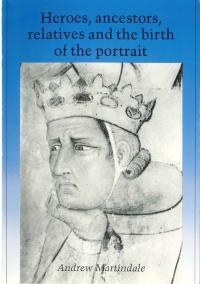Heroes, ancestors, relatives and the birth of the portrait: The Fourth Horst Gerson Lecture, held on May 26, 1988
Synopsis
The Fourth Gerson Lecture, held in memory of the Horst Gerson (1907-1978) in the aula of the University of Groningen on May 26, 1988.
The painted portrait is so common in Western art that we usually take its existence for granted. We expect to find portrait galleries in ancestral palaces as well as in the board rooms of respectable old corporations. Yet we cannot explain the rise of the individual portrait solely on the basis of dynastic and institutional needs. Why did the portrait develop into the shape familiar to us? What purposes were served by its emergence? These are some of the questions dealt with in this thoughtful exploration of the circumstances surrounding the birth of a genre.
The answers, tentative as they are, throw light on the entire subsequent history of portraiture. In its variety of forms and functions, the portrait remains elusive. 'Although the birth of a genre in western art ought to be the occasion for at least a small fanfare', Martindale finds it 'difficult to know when to give the first toot.' Yet the evidence does point to a certain place and time as the centre of diffusion: the papal court at Avignon in the mid-fourteent century. There, we find famous early portraits of both the institutional and personal variety: a court portrait of John 11 of France, and Simone Martini's lost drawing of Petrarch's beloved Laura.
Martindale's sensitive probing thus tends toward a common source for the main forms of this most individual and most conventional of genres. By taking into account the personal as well as political motives of sitters, patrons and artists, Martindale gives food for thought on the relation of art to life in more areas than early portraiture alone.
Downloads

Downloads
Published
Series
Categories
License

This work is licensed under a Creative Commons Attribution-NonCommercial-NoDerivatives 4.0 International License.



